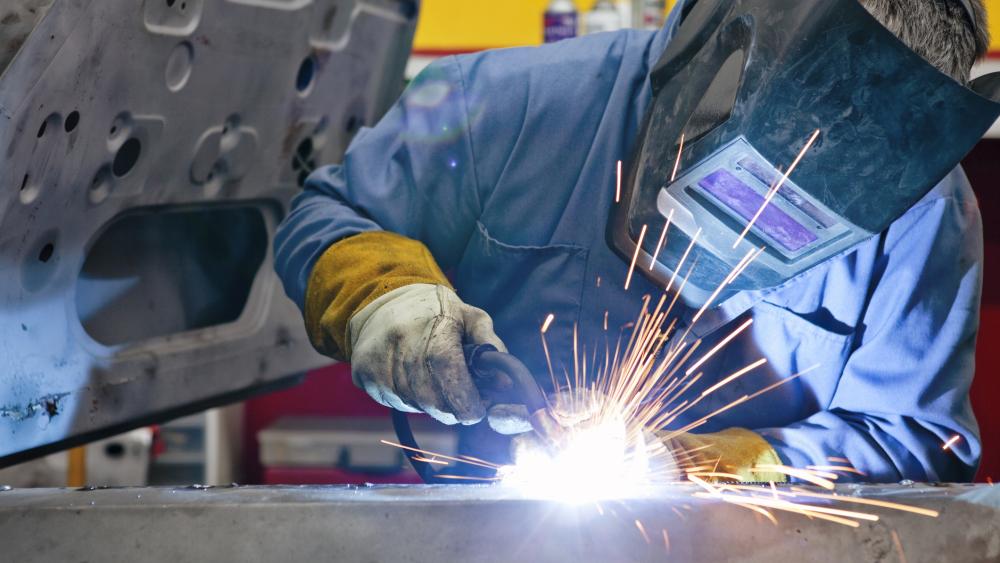Ask an expert: American workers, labor unions and the 2024 presidential election | Penn State University

UNIVERSITY PARK, Pa. — The latest jobs report issued on Sept. 6 by the Labor Department suggests the labor market is still growing, but at a slower pace. Americans will be watching the Federal Reserve to see how much it slashes interest rates this month, and politicians will have their eyes on American workers, hoping to court their votes in November.
Penn State News spoke with Paul Clark, professor of labor and employment relations, to see how the labor market, unions and American workers may affect the results of the presidential election.
Q: How have recent economic conditions impacted American workers and their unions?
Clark: The COVID-19 and post-COVID-19 years have seen a tightening of the labor market as unemployment fell and the demand for workers was greater than the supply. When employers cannot find workers to fill their job openings, this significantly increases unions’ bargaining power. Workers are more willing to risk their jobs and go on strike when there are no spare workers to replace them. And because there are few to no replacement workers available, employers cannot continue to operate when their workers strike. This increases the cost of a strike for a company and reduces the time they can hold out when one occurs. In addition, employers are more willing to grant larger wage increases because they realize this is something they would need to do anyway to attract new hires. Tight labor markets like the ones we have seen since COVID are unusual and are one of the key reasons why American unions and American workers have made great gains in recent years.
Q: Why do unions get involved in elections?
Clark: Unions exist to improve the pay, benefits and working conditions of their members. They do this in two ways. The first is by engaging in collective bargaining with their members’ employers. The second is by advocating for their members’ interests in the political and legislative processes. The actions of national and state governments can directly impact union members in many ways. They can pass laws or establish regulations that protect their rights to organize, bargain and strike; that make their workplaces safer and healthier; and that ensure their employer cannot discriminate against them on a number of grounds. Governments can provide incentives and tax breaks that boost the industries in which union members work. Or they can refrain from passing such legislation and establishing such policies.
Unions advocate for their members’ interests in the political arena by lobbying elected officials on issues related to work, employment and labor-management relations. They also work to further their members’ interests by helping supportive political candidates get elected. Towards this end, unions endorse candidates they believe will vote for pro-union and pro-worker legislation and policies. They strongly encourage their members and their families to vote for these candidates. And they are very effective at mobilizing their members to do grassroots election work like staffing phone banks, knocking on doors and getting out the vote.
Q: Who do labor unions support politically and has there been a shift in recent years?
Clark: Unions have long aligned themselves with the Democratic Party because Democrats have historically been more sympathetic towards, and supportive of, the interests of unions and their members. On the other hand, the Republican Party has traditionally been more supportive of the interests of the business community. In 2020, only a handful of national unions endorsed Donald Trump, while the vast majority endorsed Joe Biden. That will likely be the case in 2024. However, union members do not vote as a solid bloc. While a majority of union members are Democrats, a significant percentage are registered Republicans. In some unions, Republicans may represent a small minority of members; in others they may make up to 50% or more of the membership.
Q: Will unions play an important role in the 2024 election?
Clark: I believe unions and union members will play a critical role in the 2024 election. In the last two presidential elections, Donald Trump has successfully drawn working class voters, including union members, away from the Democratic Party. While almost 60% of union members and their families voted for the Democratic presidential candidate in 2012, that number fell to 51% in 2016, enough to secure Trump’s election. Due to a concerted effort on the part of unions, that number rose to 56% in 2020, ostensibly enough to put Joe Biden in the White House. Again, in 2024 the presidential election is expected to be a very close race. If unions can keep member support for the Democratic presidential nominee at the 2020 level, 56% or more, they could deliver the presidency to Kamala Harris. However, if Trump can convince enough union members to disregard their union’s endorsement and vote for him, as he did in 2016, that could decide the election in his favor. Unions, as well as both the Harris and Trump campaigns, know this and they will all make winning union members’ votes a top priority.
Related
U.S. economy adds jobs as federal layoffs and rising unemployment…
Julia Coronado: I think it's too early to say that the U.S. is heading to a recession. Certainly, we have seen the U.S. just continue t
The job listing site highlighting H-1B positions so Americans can…
A mysterious new job listings website recently went live, solely showing roles companies want to offer to their H-1B holders seeking Green Cards in an attempt t
Tepid February Jobs Report Boosts Odds of a June Fed…
Federal Reserve Board Chairman Jerome Powell speaks during a news conference. Photo by Chip ... [+] Somodevilla/Getty Images.Getty Images The February jobs repo
French university offers jobs to American scientists afraid of government…
As the current federal government in the U.S. has been freezing or cutting funding for several research grants, a French university has stepped in with an offer













